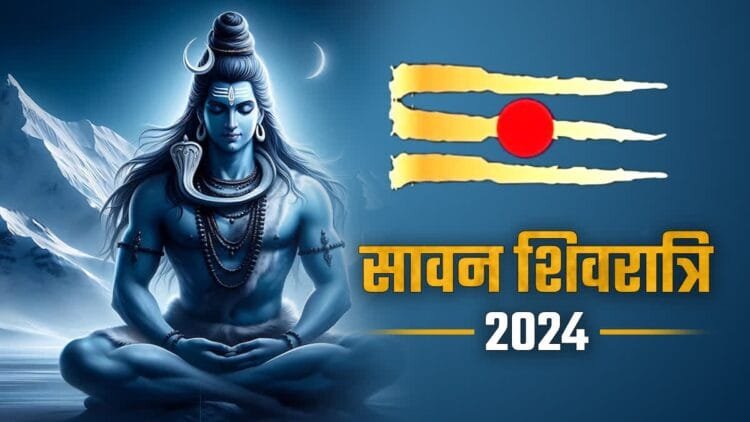Understanding Sawan Mahashivratri
Sawan Mahashivratri is one of the most revered festivals celebrated by Hindus, particularly dedicated to Lord Shiva, one of the principal deities in the Hindu pantheon. Occurring during the auspicious month of Sawan, which is specifically designated for worshipping Lord Shiva, Mahashivratri translates to ‘The Great Night of Lord Shiva.’ This celebration occurs annually, often in July or August according to the Gregorian calendar.
The significance of Sawan Mahashivratri lies deeply rooted in various legends and mythological narratives. Traditionally, it is believed that on this night, Lord Shiva performed the Tandava, a cosmic dance representing the cycle of creation, preservation, and destruction. This event is suggestive of the eternal rhythm of the universe and underscores the complex nature of Shiva as a deity who embodies multiple aspects of life.
Another widely revered myth surrounding Mahashivratri involves the tale of Samudra Manthan, or the churning of the ocean. According to this legend, gods and demons worked together to churn the ocean to obtain Amrit, the nectar of immortality. During this event, a highly lethal poison, Halahala, emerged, threatening to destroy the universe. Lord Shiva, in his infinite compassion, consumed the poison to save all creation, holding it in his throat, which turned blue, giving him the name Neelkantha. Devotees commemorate this act of supreme benevolence during Sawan Mahashivratri, engaging in rituals seeking Lord Shiva’s blessings for prosperity and protection.
Fasting and praying on Sawan Mahashivratri hold immense spiritual significance for devotees. It is widely believed that such devotions on this sacred night can lead to the fulfillment of desires, the purification of the soul, and ultimately, bring them closer to Moksha, or liberation from the cycle of birth and death. Through these practices, devotees aim to honor Lord Shiva and seek his divine grace in their lives.
Rituals and Traditions Observed
During Sawan Mahashivratri, devotees engage in a series of meticulous rituals and traditions to honor Lord Shiva. Preparations for this holy day often commence well in advance, with the cleaning and decorating of Shiva temples being of primary importance. Temples are adorned with flowers, lights, and intricate rangoli designs, capturing the festive spirit.
The worship of Lord Shiva involves various sacred items, each symbolizing different aspects of spiritual significance. Bel leaves, known as Bilva Patra, are particularly revered and offered to the Shiva Linga, signifying purification. Milk and water are fundamental in the worship process, symbolizing purity and devotion. These elements are used extensively during the Abhishekam, a ceremonial bath of the Shiva Linga. Devotees pour milk, water, honey, and other sanctified liquids over the Linga, accompanied by chants and prayers, seeking blessings and Nirvana.
A quintessential tradition observed is fasting, or vrat, which holds immense significance during Sawan Mahashivratri. Devotees undertake various types of fasting practices, ranging from consuming only fruits and milk to complete abstention from food and water. Such practices are believed to purify the body and soul, drawing the devotees closer to the divine. The abstinence from regular food is a form of self-discipline, embodying the spiritual rigor associated with the auspicious day.
Prayers and chants form the cornerstone of the night-long vigil observed during Sawan Mahashivratri. Devotees typically recite the Maha Mrityunjaya Mantra, invoking divine protection and health. The Shiva Chalisa, which narrates the glories and virtues of Lord Shiva, is also recited with fervor. Continuous chanting and prayers create an atmosphere of spiritual solace, focusing the mind on Lord Shiva’s presence.
The Abhishekam ritual is conducted with meticulous care and devotion. During the Abhishekam, the Shiva Linga is bathed with a series of sacred substances including milk, curd, ghee, honey, and sugarcane juice, followed by a sprinkling of holy water. This act symbolizes the purification of the soul and the washing away of sins, embodying the essence of Sawan Mahashivratri as a celebration of spiritual renewal.
Celebrations Across India
Sawan Mahashivratri, one of the most significant festivals dedicated to Lord Shiva, is celebrated with much fervor across various regions of India. Each area has its unique customs and traditions, yet the devotion and enthusiasm remain a constant. Key celebrations are held at some of the most prominent Shiva temples, attracting devotees from across the nation.
In Varanasi, the Kashi Vishwanath Temple stands as a centerpiece of Mahashivratri festivities. Pilgrims throng the temple to offer their prayers and partake in the elaborate rituals. The temple’s ghats come alive with the sound of bhajans, the recitation of hymns, and the chanting of ‘Har Har Mahadev. The city witnesses massive processions, with devotees carrying decorated palanquins of Lord Shiva, accompanied by traditional music and dance.
In Gujarat, the Somnath Temple sees grand celebrations. This temple, revered as one of the twelve Jyotirlingas, becomes a hub of activities. The temple is beautifully adorned with flowers and lights, and a large number of devotees engage in Abhishekam (ritual bathing) of the Shiva Lingam. The air is filled with the aroma of incense and the sounds of conch shells and bells. Cultural programs, including classical music and dance performances, add to the festive spirit.
Up in the Himalayas, the Kedarnath Temple in Uttarakhand is another essential site for Sawan Mahashivratri celebrations. Despite the challenging terrain and cold weather, thousands undertake the pilgrimage to seek blessings. The journey itself is considered a form of devotion, and the ambiance around the temple is serene and spiritually enriching. The temple’s priest conducts special pujas, and the sight of the snow-clad mountains adds a mystical charm to the celebrations.
Across different states, regional variations bring a unique flavor to the festival. In Tamil Nadu, the night-long vigil and the chanting of Shiva’s 108 names are significant. In Maharashtra, processions featuring the local dance form ‘Lezim’ are a highlight. In Karnataka, the state’s temples organize elaborate Laksha Bilva Archana (offering of one lakh Bilva leaves to the deity).
Local governments play a pivotal role in ensuring smooth and safe festivities. Special public holidays are often declared to enable maximum participation. Additional transportation and security measures are arranged to facilitate temple visits. Temporary shelters and medical camps are set up to cater to the needs of the devotees.
Overall, the celebration of Sawan Mahashivratri across India is a beautiful tapestry of regional customs and pan-Indian devotion, making it a truly national festival with a profound spiritual impact.
Modern-Day Celebrations and Global Observance
Sawan Mahashivratri, a revered Hindu festival, has evolved remarkably over the years. While the core traditions and rituals have remained authentic to their origins, modern-day celebrations reflect the impact of globalization, technology, and urbanization. In India and among the Hindu diaspora worldwide, the festival continues to be an occasion of devotion and festivity, adapting to contemporary lifestyles and advancements in connectivity.
One significant influence on Sawan Mahashivratri celebrations is digital technology. Social media platforms and virtual meeting tools have revolutionized the way devotees connect and participate in the festival. The COVID-19 pandemic further accelerated this trend, as restrictions on physical gatherings led to the proliferation of online pujas, live-streamed temple rituals, and virtual satsangs. Devotees from different corners of the globe can now join in real-time, fostering a sense of community and shared spirituality despite geographical distances.
In countries with substantial Hindu populations such as Nepal, Mauritius, and Indonesia, Sawan Mahashivratri is marked by grand public celebrations. In Nepal, particularly at the Pashupatinath Temple in Kathmandu, thousands of devotees and sadhus gather to perform rituals and meditate. Mauritius witnesses vibrant processions and temple ceremonies attended by the entire community, showcasing the island’s rich cultural heritage. In Indonesia, the spirit of Mahashivratri is celebrated with equal fervor, particularly in Bali, where the cultural interplay between Hinduism and local traditions creates unique festivities.
Quotes and anecdotes from devotees and spiritual leaders highlight the festival’s enduring significance. According to Swami Vishwajeetananda, a revered spiritual leader, “While the ways we celebrate may have transformed, the essence of Sawan Mahashivratri—devotion to Lord Shiva—remains unchanged. Technology has enabled us to reach a broader audience, helping more people reconnect with their spiritual roots.” A young devotee, Priya Sharma, shares, “Participating in an online puja allowed me to feel connected to my family and our traditions, even though we are miles apart. It’s heartwarming to see how the spirit of Mahashivratri transcends physical boundaries.”
The modern adaptation of Sawan Mahashivratri celebrations exemplifies the dynamic nature of traditions, merging age-old rituals with contemporary practices. Despite the evolving methods of observance, the festival’s core values of devotion, unity, and spirituality remain steadfast, resonating deeply with devotees around the world.
























